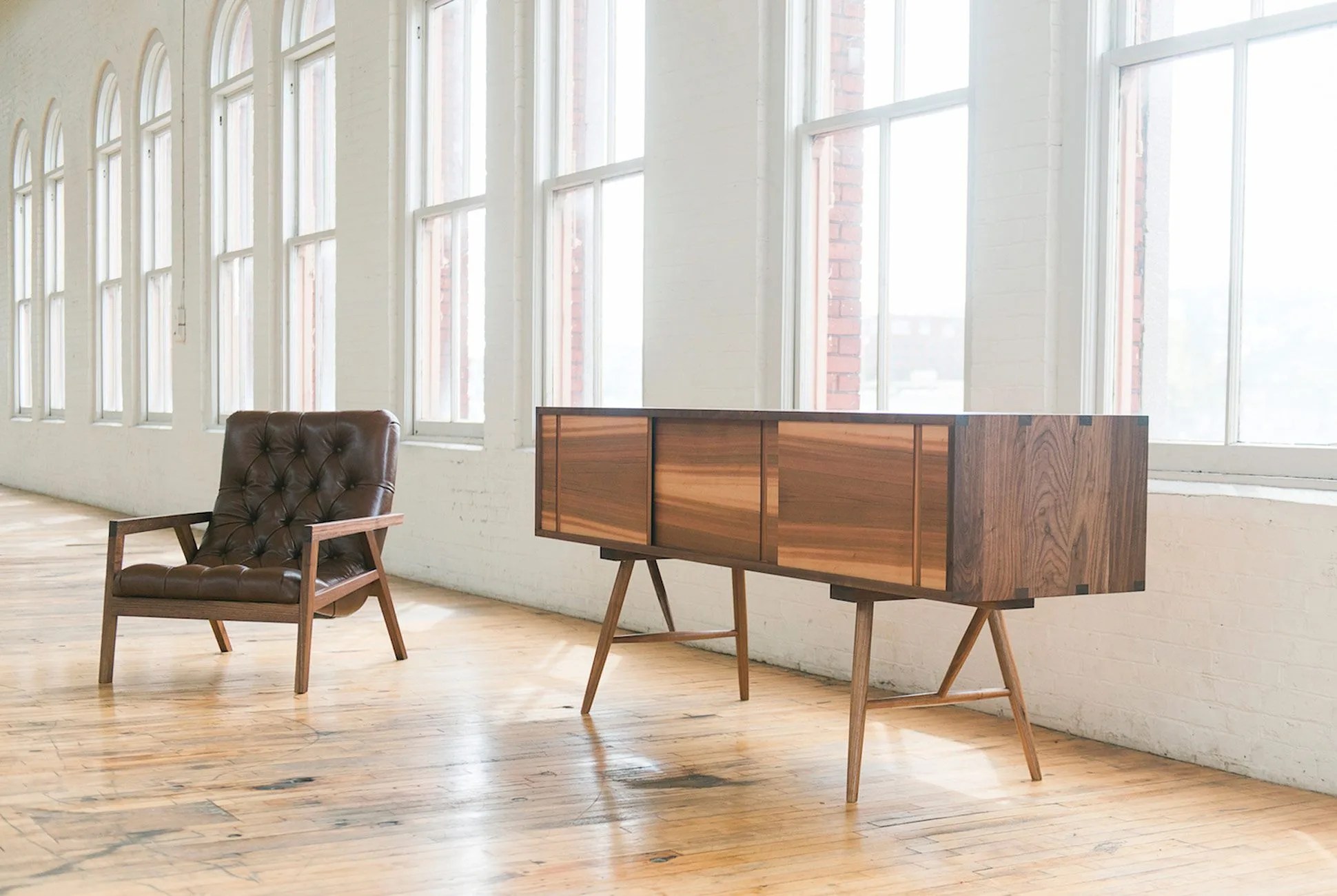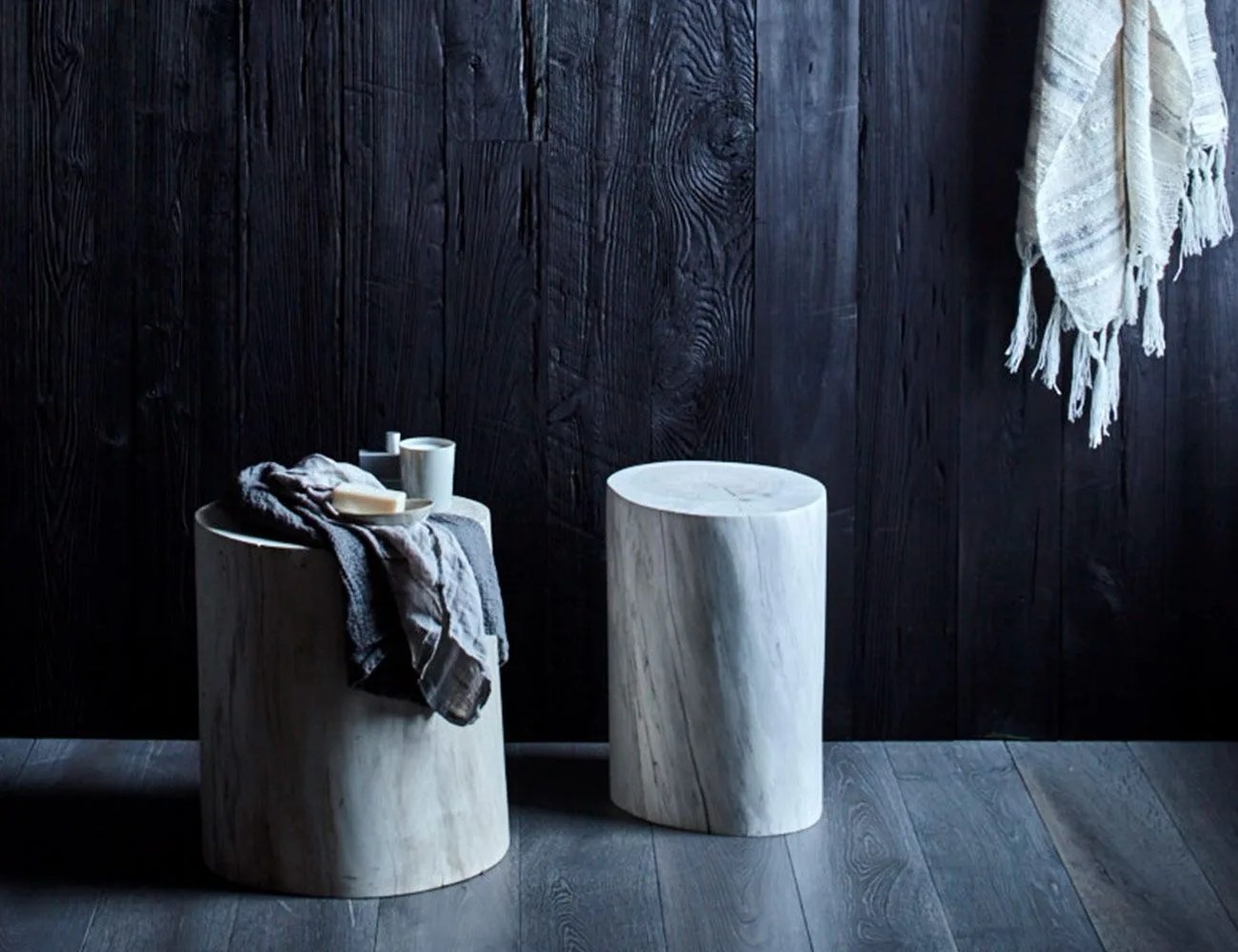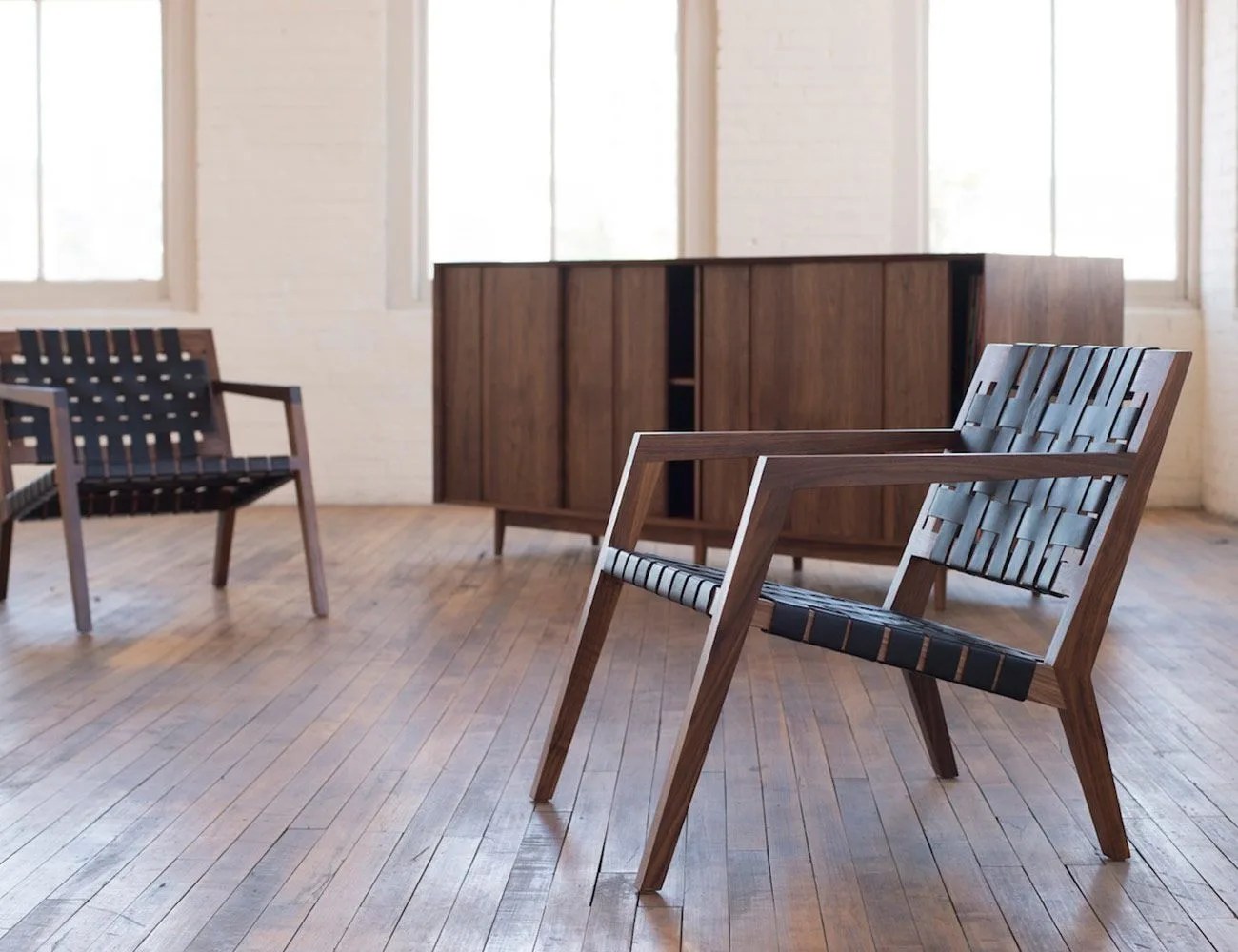Eighteenth-century Shakers put contemporary minimalists to shame. Members of this religious sect based in upstate New York and Western Massachusetts were adamant that form follow function: a chair was made for the sole purpose of being sat on, and any perceived ornamentation was mere coincidence. “Shaker design was specific to the functionality within their culture,” says Jonah Meyer, founder of contemporary furniture design studio Sawkille. “The aesthetic was sometimes a byproduct of living in a simpler time.”
Adherents to the Shaker belief system have dwindled — only two remain — but the basic forms and philosophies behind its furniture have endured. “In fact, it [Shaker design] is more popular today than it has ever been before,” says Sara Ossana, one half of Rhode Island–based furniture company O&G Studio. “Shaker craft and style has had a tremendous impact on modern American and Scandinavian furniture.”
Pure form and pared-down shapes offer comfort.
A handful of independent furniture studios, like Sawkille and O&G, are applying contemporary sensibilities to classic Shaker forms. Slight adjustments to proportion, or the addition of color, have a big impact on otherwise austere furniture. Earlier this year, mid-century furniture mecca Design Within Reach hosted Furnishing Utopia, an independent design collective that set out to explore the influence of Shaker principles on contemporary aesthetics, shining a spotlight on the continued relevance and timelessness of the designs in the process.
The revival of Shaker styles is no coincidence. As daily life becomes increasingly tech-driven, -dependent and -dominated, pure form and pared-down shapes can be comforting. “The resurgence of these styles represents a desire for quality, craft and honesty in materials, and objects that evoke connection and continuity within American ideals,” Ossana posits. “This style could be described as inherently American. Shaker design is all about stripping away…. The minimal designs can bring a sense of balance and purity to hectic modern life.”
That’s not to say that contemporary designers aren’t building ornamentation into Shaker forms, however. Dramatically tapered or elongated spindles, for example, are core to a Windsor chair but double as design details. “[Shakers] created a style that was beautifully crafted, had nice lines and proportions, using techniques that were already in place,” Meyer says. “They lost some of the frills, showed their joinery and built things that last. It endures because they thought about functionality and left a lot of possibility for improvement and reinterpretation.”
Below, find three contemporary furniture studios using traditional Shaker forms and philosophies to inform their designs.










